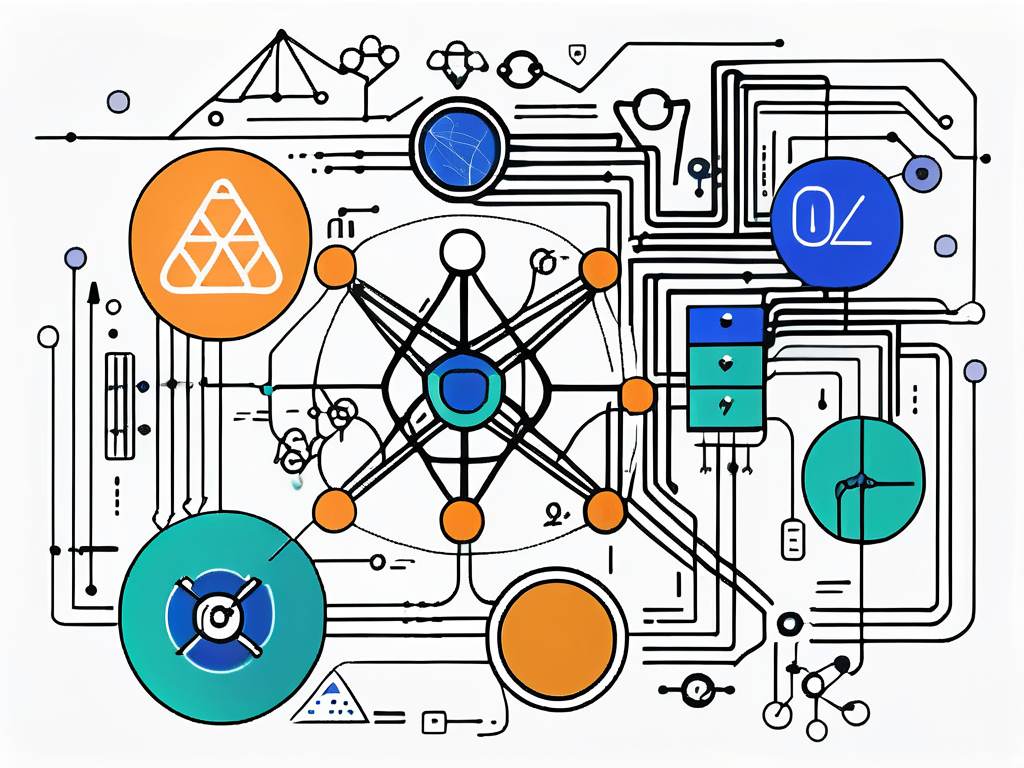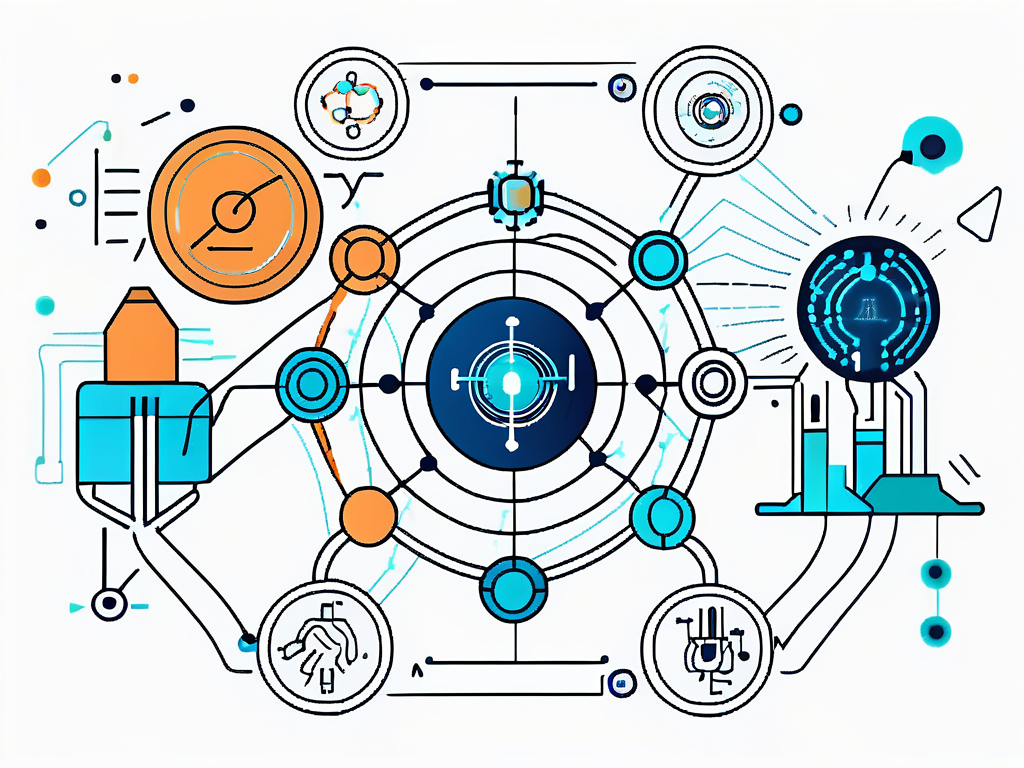Data science and machine learning are two closely related fields that have gained significant traction in recent years. The intersection of these disciplines has resulted in a powerful synergy that has the potential to revolutionize various industries. In this article, we will explore the basics of data science and machine learning, delve into their respective fundamentals and applications, discuss how they complement each other, examine the impact on different sectors, and consider the future prospects of this exciting convergence.
Understanding the Basics of Data Science
Data science is an interdisciplinary field that involves extracting insights and knowledge from vast amounts of data using scientific methods, processes, and algorithms. Key concepts in data science include data collection, data cleaning, exploratory data analysis, data visualization, and predictive modeling. By leveraging statistical techniques, machine learning algorithms, and domain expertise, data scientists can uncover valuable insights that drive data-driven decision making.
The role of data science in today’s world cannot be overstated. As the amount of data generated continues to grow exponentially, organizations across all sectors are becoming increasingly reliant on data science techniques to gain a competitive edge. From improving customer experiences to optimizing business processes, data science has become an essential tool in driving innovation and growth.
Data collection is a crucial first step in the data science process. It involves gathering raw data from various sources such as databases, APIs, sensors, and more. This data can be structured, unstructured, or semi-structured, and may come in different formats like text, images, or numerical values. Data scientists need to carefully select and collect relevant data that aligns with the goals of their analysis.
Data cleaning, also known as data preprocessing, is another fundamental aspect of data science. It involves identifying and correcting errors in the data, handling missing values, removing duplicates, and transforming data into a usable format. Data cleaning is essential to ensure the quality and integrity of the data before performing any analysis or modeling. Without proper data cleaning, the results of data science projects may be inaccurate or misleading.
Delving into Machine Learning
Machine learning is a subfield of artificial intelligence that focuses on the development of algorithms and models that allow computers to learn from data and make predictions or decisions without being explicitly programmed. Fundamentals of machine learning include supervised learning, unsupervised learning, and reinforcement learning.

Applications of machine learning span a wide range of domains, from image and speech recognition to natural language processing and autonomous vehicles. Machine learning algorithms have the ability to detect patterns and make predictions, allowing organizations to automate complex tasks, improve efficiency, and gain valuable insights from their data.
Supervised learning involves training a model on a labeled dataset, where the algorithm learns to map input data to the correct output. This type of learning is commonly used in tasks such as classification and regression. Unsupervised learning, on the other hand, deals with unlabeled data and focuses on finding hidden patterns or intrinsic structures in the data. Clustering and dimensionality reduction are popular techniques in unsupervised learning.
Reinforcement learning is a type of machine learning where an agent learns to make decisions by interacting with an environment. The agent receives feedback in the form of rewards or penalties based on its actions, allowing it to learn the optimal strategy over time. This type of learning is often used in gaming, robotics, and autonomous systems.
The Convergence of Data Science and Machine Learning
While data science and machine learning are distinct disciplines, they are closely intertwined and mutually beneficial. Data science provides the foundation and tools for collecting, cleaning, and analyzing data, while machine learning enables data scientists to build models that can automatically learn from data and make predictions. By combining the power of data science with machine learning techniques, organizations can unlock the full potential of their data and derive actionable insights.
One key way in which data science complements machine learning is through feature engineering. Feature engineering involves selecting, transforming, and creating suitable features from raw data to improve the performance of machine learning algorithms. Data scientists use their expertise to handcraft features that capture relevant information and effectively represent the underlying patterns in the data.
Another aspect of the convergence is the iterative nature of the data science and machine learning process. Data scientists continuously refine and iterate their models based on insights gained from analyzing the data, while machine learning algorithms learn and improve over time as they receive new data.
Moreover, the convergence of data science and machine learning has led to the development of advanced techniques such as deep learning. Deep learning is a subset of machine learning that uses artificial neural networks to model and interpret complex patterns in data. This approach has been particularly successful in tasks such as image recognition, natural language processing, and speech recognition, where traditional machine learning techniques may fall short.
Additionally, the synergy between data science and machine learning has paved the way for the rise of automated machine learning (AutoML) tools. AutoML platforms aim to automate the end-to-end process of applying machine learning to real-world problems, making it more accessible to non-experts and accelerating the deployment of machine learning models in various industries.
The Impact of the Intersection on Various Industries
Influence on the Healthcare Industry
The intersection of data science and machine learning has immense potential to transform the healthcare industry. By analyzing vast amounts of patient data, including medical records, genomic data, and wearable device data, data scientists and machine learning algorithms can identify patterns and risk factors, enable early disease detection, and develop personalized treatment plans. This can lead to improved patient outcomes, reduced costs, and more efficient healthcare delivery.

For example, imagine a scenario where a patient’s wearable device continuously monitors their heart rate, blood pressure, and other vital signs. By applying data science techniques and machine learning algorithms to this real-time data, healthcare providers can detect early warning signs of potential health issues, such as irregular heart rhythms or spikes in blood pressure. This allows for timely intervention and proactive healthcare management, ultimately improving the patient’s quality of life and reducing the need for emergency interventions.
Changes in the Finance Sector
The finance sector has also been greatly impacted by the intersection of data science and machine learning. By analyzing financial data, such as market trends, customer behavior, and credit scores, organizations can make more informed investment decisions, detect fraudulent activities, and personalize financial services. Machine learning algorithms can also be used for algorithmic trading and portfolio management, enabling organizations to optimize their investment strategies.
Consider the use of machine learning algorithms in fraud detection within the finance sector. These algorithms can analyze large volumes of transaction data and identify patterns that indicate potential fraudulent activities. By continuously learning from new data, these algorithms can adapt and improve their accuracy over time, staying one step ahead of fraudsters. This not only protects financial institutions and their customers from financial losses but also helps maintain trust in the financial system as a whole.
Revolution in the Retail Industry
Data science and machine learning have revolutionized the retail industry by enabling organizations to understand customer behavior, personalize marketing campaigns, optimize inventory management, and improve supply chain efficiency. By analyzing customer data, retailers can identify trends, preferences, and purchase patterns, allowing them to offer personalized recommendations and promotions. Additionally, machine learning algorithms can help retailers predict demand, optimize pricing, and identify potential bottlenecks in the supply chain.
Let’s take a closer look at how data science and machine learning are transforming inventory management in the retail industry. By analyzing historical sales data, current market trends, and external factors like weather patterns, retailers can accurately forecast demand for their products. This allows them to optimize their inventory levels, reducing the risk of overstocking or running out of popular items. Furthermore, machine learning algorithms can identify patterns in customer behavior, such as seasonal buying patterns or preferences for certain product combinations, enabling retailers to make data-driven decisions about product assortment and placement.
Future Prospects of Data Science and Machine Learning Intersection
Predicted Trends for the Next Decade
As the field of data science and machine learning continues to evolve, several key trends are expected to shape the future. One such trend is the increasing use of deep learning algorithms, which have demonstrated remarkable performance in tasks such as image recognition and natural language processing. These algorithms, inspired by the structure and function of the human brain, have the ability to learn from vast amounts of data and make complex decisions with remarkable accuracy. This has opened up new possibilities in fields such as healthcare, where deep learning algorithms are being used to diagnose diseases and develop personalized treatment plans.

Another trend is the growing emphasis on ethical considerations in data science and machine learning, ensuring that algorithms are fair, transparent, and unbiased. With the increasing reliance on algorithms to make critical decisions, such as determining creditworthiness or predicting criminal behavior, it is essential to address potential biases and ensure that the algorithms are not perpetuating discrimination. This has led to the development of fairness metrics and algorithmic auditing techniques, which aim to identify and mitigate biases in machine learning models.
Additionally, the democratization of data science tools and techniques is expected to enable a wider range of professionals to leverage the power of data science and machine learning in their work. Traditionally, data science has been a highly specialized field, requiring advanced mathematical and programming skills. However, with the advent of user-friendly tools and platforms, individuals from diverse backgrounds can now access and analyze data, uncovering insights and making data-driven decisions. This democratization has the potential to drive innovation and accelerate progress in various industries.
Potential Challenges and Solutions
While the intersection of data science and machine learning holds immense promise, it also presents certain challenges. One such challenge is the need for robust data governance and data quality management processes, as the accuracy and reliability of machine learning models are heavily dependent on the quality of the underlying data. In order to ensure that the models are making accurate predictions and providing valuable insights, organizations need to invest in data infrastructure, data cleaning techniques, and data validation processes. This will help in minimizing errors and biases that can arise from poor data quality.
In addition, ethical concerns surrounding data privacy and algorithmic bias need to be addressed to ensure that the benefits of data science and machine learning are equitably distributed. The collection and analysis of large amounts of personal data raise concerns about privacy and consent. Organizations need to establish clear guidelines and policies for data collection, storage, and usage to protect the privacy rights of individuals. Furthermore, efforts should be made to increase diversity and inclusivity in the development and deployment of machine learning models, in order to mitigate biases and ensure that the technology benefits all segments of society.
Moreover, it is essential to foster a culture of responsible and ethical use of data science and machine learning. This involves promoting transparency in algorithmic decision-making, providing explanations for the predictions made by machine learning models, and allowing individuals to challenge and appeal automated decisions. By involving stakeholders and ensuring accountability, organizations can build trust and confidence in the use of data science and machine learning technologies.
In conclusion, the intersection of data science and machine learning is a powerful force that has the potential to transform various industries. By combining the strengths of data science and machine learning, organizations can unlock insights, automate complex tasks, and make more accurate predictions. The impact of this convergence is already evident in industries such as healthcare, finance, and retail. As the field continues to evolve, it is important to address challenges and ensure that data science and machine learning are used in an ethical and responsible manner. The future prospects of this intersection are exciting, and it will be fascinating to see how it continues to shape our world.

Leave a Reply